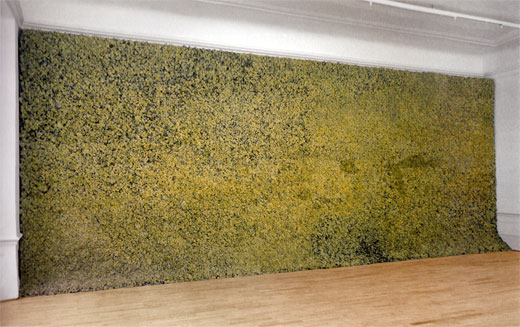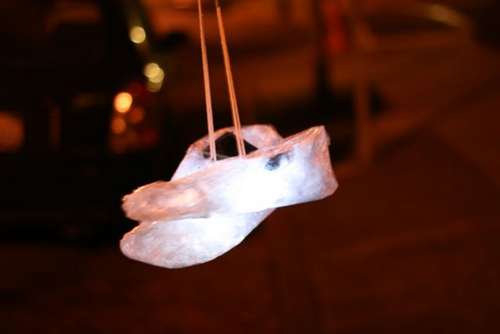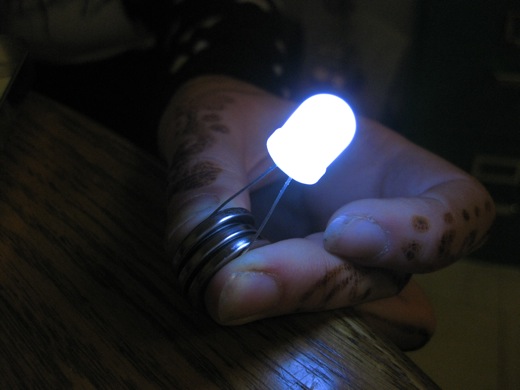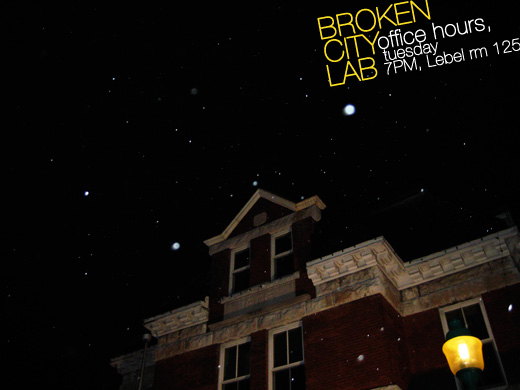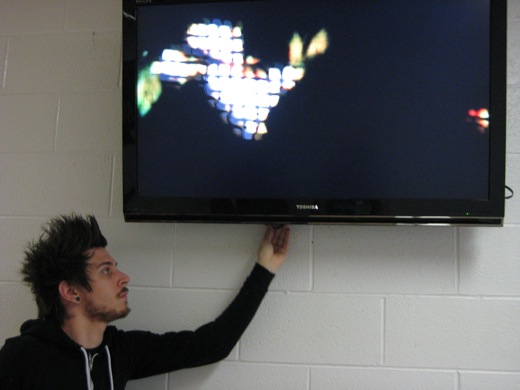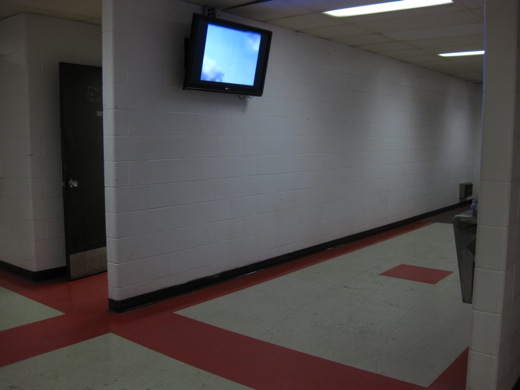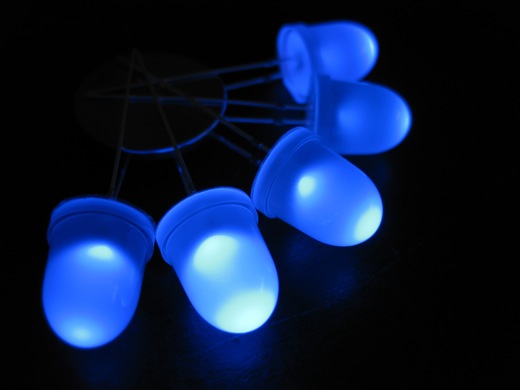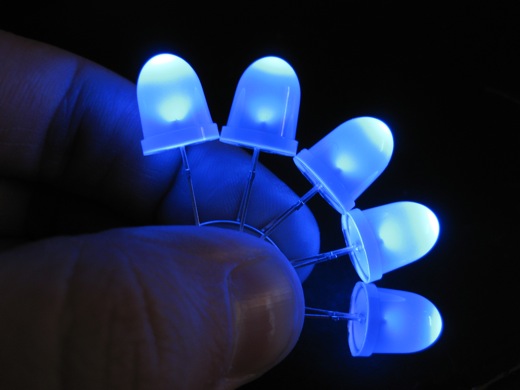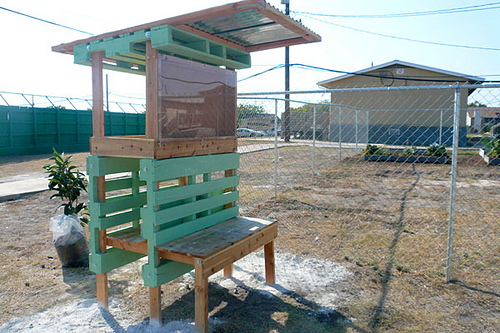Spent last night around the table with my brother, the high school physics teacher, trying to figure out how one might calculate the resistors and type of battery that would be needed in a circuit powering 200 LEDs.
I know there are some calculators online, as Mike had suggested earlier, but because I really don’t know the first thing about electricity, I think I was probably confusing the problem… as well, our Internet connection was down, so we were googless. However, as you can see above, we eventually came out with the right number.
Then I found this formula earlier tonight…
(SupplyVoltage – LEDForwardVoltage)/ NominalLEDCurrent = ResitorValue
Then I ordered a whole bunch of 270 ohm resistors and a 9v wallwart from Jameco to hopefully get these LED projects moving forward.


